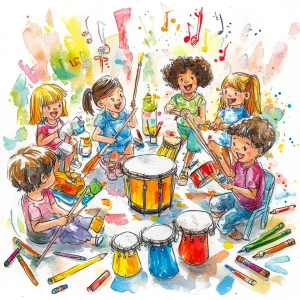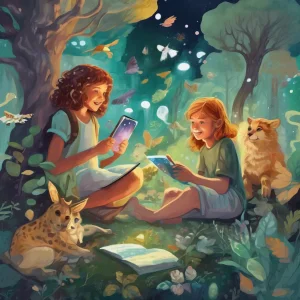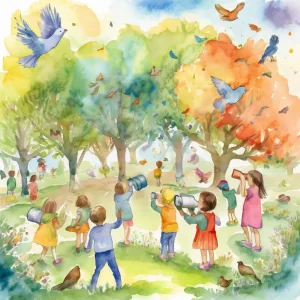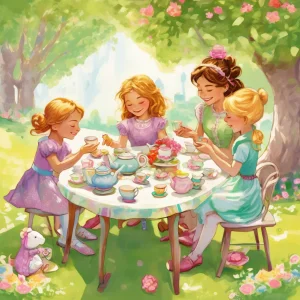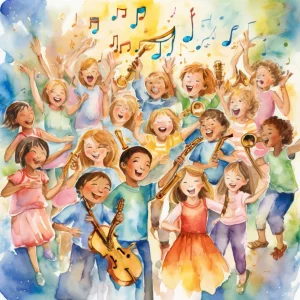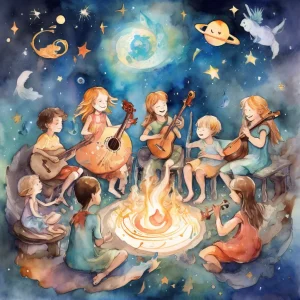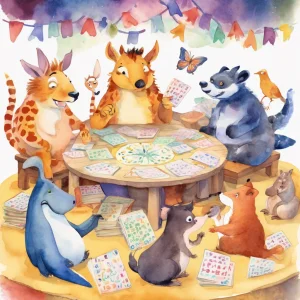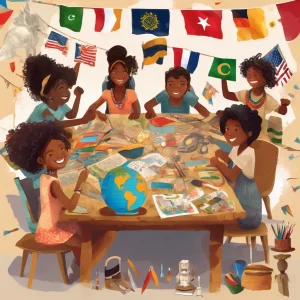Activity
Similar Activities
Empathy Through Storytelling: Musical Sensory Experience
Children’s Age: 2–3 years
Activity Duration: 5 – 15 minutes
Let's dive into Musical Sensory Storytime! Get ready for a fun experience that will engage all your senses. We will read a story, play musical instruments, create art, and enjoy co…
Activity Duration: 5 – 15 minutes
Enchanted Digital Storytelling Adventure through Nature's Wonders
Children’s Age: 5–18 years
Activity Duration: 50 minutes
Let's go on a "Digital Storytelling Adventure"! We'll create exciting stories using nature-themed digital images and fun drawing tools on a tablet or computer. Get ready to brainst…
Activity Duration: 50 minutes
Nature Shapes Adventure: Bird Watch & Scavenger Hunt
Children’s Age: 4–5 years
Activity Duration: 10 minutes
An outdoor activity for children aged 4-5 years combining bird watching and shape recognition.
Activity Duration: 10 minutes
Enchanted Tea Party Adventure: A Magical Journey
Children’s Age: 3 years
Activity Duration: 10 – 15 minutes
Join us for a Magical Tea Party Adventure! Enhance your child's play skills, social-emotional growth, and language abilities through a whimsical tea party experience. Gather teacup…
Activity Duration: 10 – 15 minutes
Musical Harmony: Healthy Routines Jingle Jam
Children’s Age: 4–6 years
Activity Duration: 15 – 25 minutes
The "Healthy Routines Jingle" activity is tailored for children aged 48 to 72 months to enhance self-care skills, writing abilities, and musical creativity through a fun approach. …
Activity Duration: 15 – 25 minutes
Musical Melodies of Healthy Lifestyle Jam Session
Children’s Age: 2–3 years
Activity Duration: 15 minutes
The Healthy Lifestyle Jam Session combines music and healthy habits for children aged 3-6 in a fun and interactive way. Gather toy musical instruments and healthy food items to cre…
Activity Duration: 15 minutes
Melodies of Wisdom: Musical Storytelling Circle
Children’s Age: 10–14 years
Activity Duration: 20 – 45 minutes
The "Musical Storytelling Circle" activity is designed for children aged 10 to 14 to boost communication skills through interactive storytelling with music and instruments. Partici…
Activity Duration: 20 – 45 minutes
Symmetry Magic: Reflective Art Adventure
Children’s Age: 7–10 years
Activity Duration: 10 – 25 minutes
This activity involves exploring symmetry through a creative and interactive art project for children aged 7-10 years.
Activity Duration: 10 – 25 minutes
Magical Math Journey: Sensory Math Storytime Adventure
Children’s Age: 2–3 years
Activity Duration: 10 – 30 minutes
Let's embark on the "Sensory Math Storytime" adventure! This activity blends sensory exploration, storytelling, and basic math to make learning engaging for children. You'll need t…
Activity Duration: 10 – 30 minutes
Cultural Collage Creations: Exploring World Wonders Together
Children’s Age: 7–9 years
Activity Duration: 10 – 25 minutes
Let's embark on a creative journey with "Cultural Collage Creations"! This educational craft project invites children to explore diverse cultures through art. Gather supplies and c…
Activity Duration: 10 – 25 minutes




